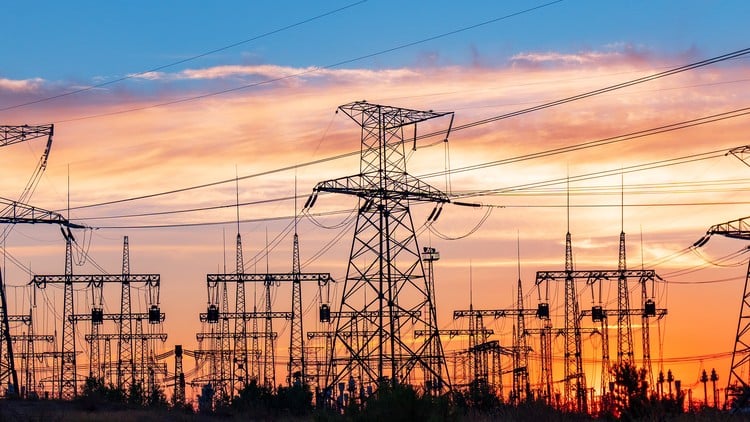India’s energy transition is no longer about megawatts installed; it’s about megawatts delivered—on time, across states, and around the clock. Solar parks in deserts and wind corridors along our coasts are scaling fast, but the decisive battleground has shifted to transmission: who builds it, how quickly it’s planned, and how smartly it is operated.
From Projects to Power: The Grid Gap
A decade ago, the Power Grid Corporation study that birthed the Green Energy Corridors (GEC) warned that renewable-rich zones lacked evacuation lines and pooling stations. That diagnosis set India on a transmission build-out that continues today, connecting new RE hubs to demand centres.
The government’s current playbook is explicit: a ₹2.4-lakh-crore national plan to integrate 500+ GW of non-fossil capacity by 2030, spanning ultra-high-capacity corridors from Rajasthan, Gujarat and Ladakh to the industrial load of the north, west and south. This plan is the backbone for adding >200 GW of fresh renewable capacity this decade.
Planning Rules are Changing—With Speed in Mind
To avoid “build-and-pray” grid expansion, India has overhauled procedures: a modern Indian Electricity Grid Code (2023), rolling transmission planning criteria, and Connectivity & General Network Access (GNA) reforms that let generators and buyers book open access more transparently while the Central Transmission Utility (CTU) runs multi-year plans. These are quiet regulatory shifts, but they are what turn gigawatt announcements into dispatchable supply.
Storage + Wires: The New Firm Power
Intermittency is a feature, not a bug, of wind and solar. India has responded by waiving ISTS charges for storage (pumped hydro and co-located batteries) through June 2028, cutting delivered costs for discoms and de-risking hybrid projects. A parallel 30 GWh BESS support scheme is live. Together, these policies make the “wire + storage” combo the fastest route to firm, clean power on India’s grid.
What’s Being Built—And Where
The build-out is visible on the ground: new 765 kV backbones and pooling stations to unlock renewable zones, Western–Southern interconnections to smooth regional imbalances, and state plans to double intra-state capacity by 2035 (Bihar’s ₹12,869-crore upgrade is one example). Private and public players are winning competitive bids; recent awards include a ₹28-billion project in Gujarat to power a green-hydrogen ecosystem.
Why Transmission is the Decarbonisation Multiplier
- Every rupee in wires unlocks several rupees in generation. Transmission removes curtailment risk and makes PPAs bankable; without it, projects sit stranded. The CEA’s roadmap details corridors from Khavda (Gujarat), Bhadla–Fatehgarh–Bikaner (Rajasthan), Anantapur–Kurnool (AP) and offshore wind off TN/Gujarat, all sized for the 2030 mix.
- It cuts system costs. High-capacity corridors move cheap daytime solar to evening load centres, while inter-regional lines reduce the need for costly peakers.
- It enables new industries. Green hydrogen, data centres and 24×7 clean supply depend on firmed renewables plus long-haul transmission; bidding pipelines now routinely bundle these requirements.
The Execution to-do List
Synchronise land and permits with line routes. Transmission ROW, forest clearances and bay-ready substations must be treated as critical path items, not afterthoughts. (GEC’s early lesson.)
Standardise long-lead equipment. HV transformers/reactors and STATCOMs need vendor frameworks to avoid bottlenecks.
Digitise operations. AI-assisted forecasting, dynamic line rating and RLDC-CTU data sharing reduce congestion and curtailment—regulatory rails exist via the new Grid Code.
Lock storage into the plan. With ISTS waivers in place, co-locating storage on major corridors should be the default, not the exception.
The Politics of Wires: Centre–State Alignment
Inter-state highways of power work only if intra-state networks keep pace. The CEA/CTU now run rolling five-year plans; states need mirror pipelines and tariff clarity so discoms see delivered clean power as cheaper than legacy alternatives. Competitive TBCB bidding, used widely for recent 765 kV projects, should be the norm to compress timelines and costs.
India is already among the world’s fastest renewable markets; MNRE pegs annual RE additions at 15–25 GW and rising. But the metric that will decide whether we hit 500 GW non-fossil by 2030 is not capacity tendered—it’s clean megawatt-hours delivered through robust transmission and storage-ready corridors. The country has the blueprint (CEA plan), the policy nudges (ISTS waivers, Grid Code, GNA), and an active public–private build force. Now the task is single-minded execution—because in India’s transition, wires are the new fuel.
